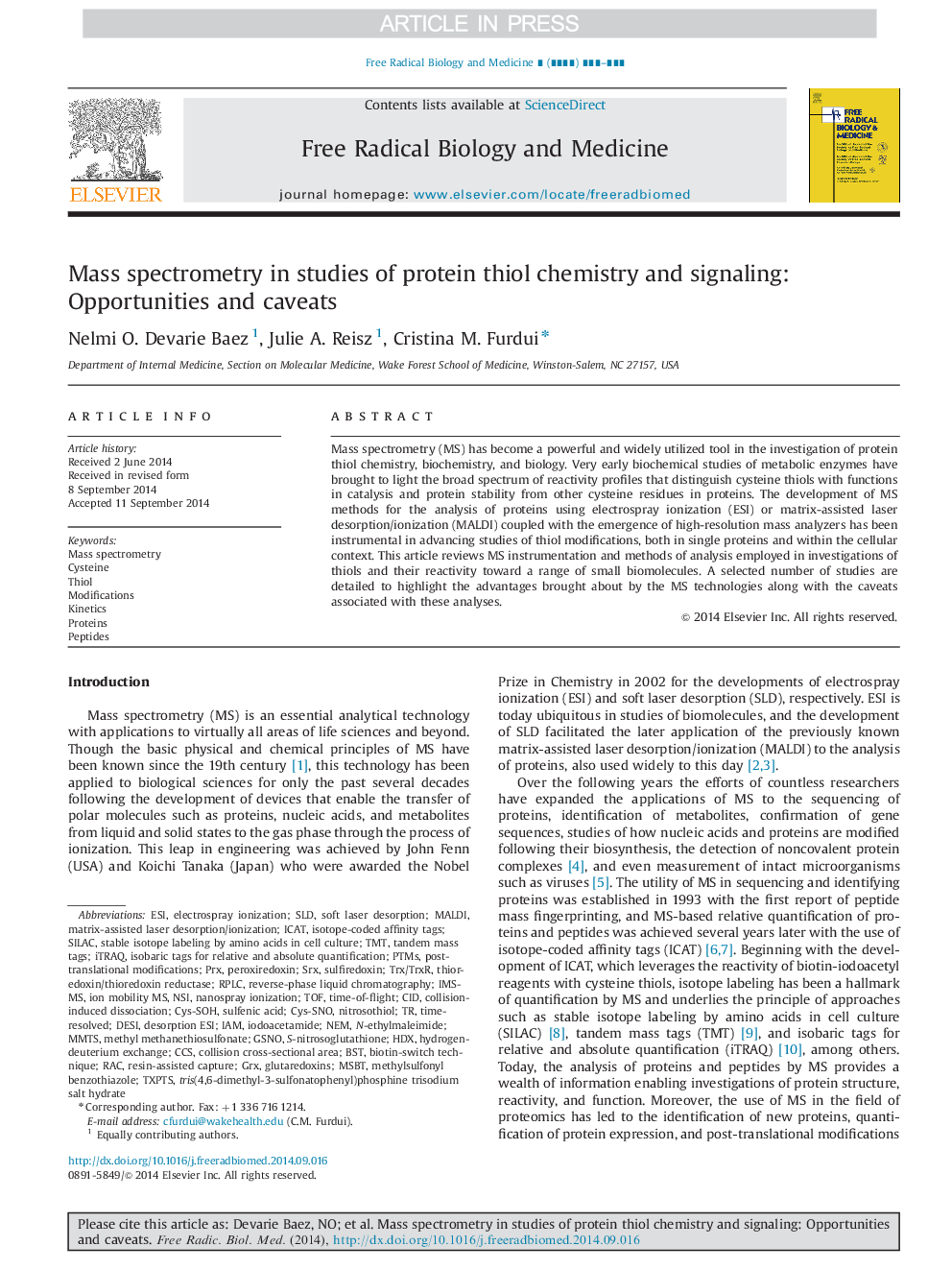| Article ID | Journal | Published Year | Pages | File Type |
|---|---|---|---|---|
| 8269446 | Free Radical Biology and Medicine | 2015 | 21 Pages |
Abstract
Mass spectrometry (MS) has become a powerful and widely utilized tool in the investigation of protein thiol chemistry, biochemistry, and biology. Very early biochemical studies of metabolic enzymes have brought to light the broad spectrum of reactivity profiles that distinguish cysteine thiols with functions in catalysis and protein stability from other cysteine residues in proteins. The development of MS methods for the analysis of proteins using electrospray ionization (ESI) or matrix-assisted laser desorption/ionization (MALDI) coupled with the emergence of high-resolution mass analyzers has been instrumental in advancing studies of thiol modifications, both in single proteins and within the cellular context. This article reviews MS instrumentation and methods of analysis employed in investigations of thiols and their reactivity toward a range of small biomolecules. A selected number of studies are detailed to highlight the advantages brought about by the MS technologies along with the caveats associated with these analyses.
Keywords
GSNOCys-SOHBiotin-switch techniqueMMTSDESIRPLCSrxGRxPRXPTMsHDXITRAQS-nitrosoglutathioneTMTBSTTOFICATCCSESICIDRACN-ethylmaleimidesldCollision-induced dissociationSulfenic acidisobaric tags for relative and absolute quantificationModificationsposttranslational modificationsTandem mass tagsIsotope-coded affinity tagsThiolmatrix-assisted laser desorption/ionizationTime-resolvedTime-of-Flight SulfiredoxinCysteineSILACKineticsMass spectrometryMALDIHydrogen-deuterium exchangemethyl methanethiosulfonateIAMstable isotope labeling by amino acids in cell cultureNEMNitrosothiolProteinsPeroxiredoxinPeptidesreverse-phase liquid chromatographyGlutaredoxinselectrospray ionizationiodoacetamide
Related Topics
Life Sciences
Biochemistry, Genetics and Molecular Biology
Ageing
Authors
Nelmi O. Devarie Baez, Julie A. Reisz, Cristina M. Furdui,
